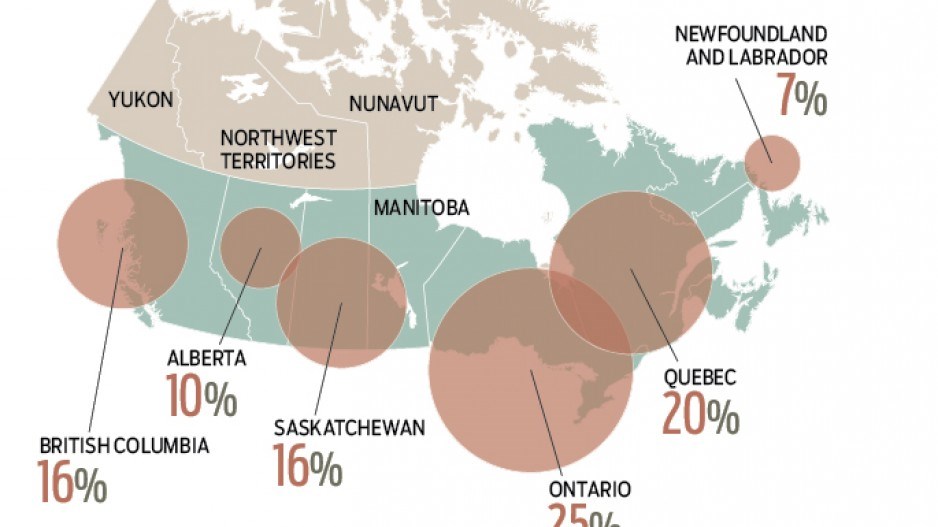Four were metallurgical (“met”) coal mines; three were metals mines. And later this year, when it has run through its stockpile of copper, Imperial Metals Corp. (TSX:III) plans to suspend operations at its Huckleberry mine to bring the total to eight.
“We’re pretty sure the only significant coal mines operating in the province for the remainder of the year will be the Teck [Resources Ltd. (TSX:TCK.B)] coal mines,” Mark Platt, mining sector lead for PwC, told a group of Vancouver industry representatives last week at a release of its annual mining survey.
Based on its survey of 14 operating mines, one smelter and 12 exploration and development-stage projects in B.C., PwC estimates 2,000 direct mining jobs were lost in B.C. to mine closures or downsizing.
Capital expenditures fell from $1.8 billion in 2013 to $1.2 billion in 2015, and net mining revenues fell from $7 billion in 2013 to $6.3 billion in 2015.
The good news is that a five-year-long mining bear market appears to be over, say industry leaders, who predict 2016 will be the year that mining in B.C. begins its recovery.
“Conditions are challenging, but hopefully we’ve reached the bottom,” Platt said.
Gavin Dirom, CEO of the Association for Mineral Exploration British Columbia, echoed that sentiment. “I’m going to go out on a limb and just say I think the worst is behind us. We couldn’t say that last year.”
Also on the good-news side of the ledger: during the same period that seven mines closed, two new ones went into production: Imperial Metals’ Red Chris copper mine and Thompson Creek Metals Co.’s (TSX:TCM) Mount Milligan copper-gold mine near Prince George. Two more new mines are now under construction and scheduled to be in production by 2017: the Pretium Resources Inc. (TSX:PVG) Brucejack gold mine and the JDS Silver mine near the Yukon border.
B.C.’s principal mining commodities are metallurgical coal (used in making steel), copper and gold. It also produces some zinc and molybdenum. The sector has been hammered by low commodity prices since 2011.
Copper prices fell from US$4 per pound in 2011 to US$2.50 per pound in 2015. Met coal prices fell from US$257 per tonne in 2011 to US$101 per tonne in 2015, and now hover around US$84 per tonne. Gold fell from US $1,572 per ounce in 2011 to US$1,160 per ounce in 2015. The low Canadian dollar has offset those lower prices somewhat, giving Canadian mines some edge over U.S. producers. A 20% drop in copper prices in the U.S. translated into just 7% in Canada, thanks to the low Canadian dollar, Platt said.
But the province’s carbon tax and dramatic increases in the cost of electricity are putting B.C. producers at a competitive disadvantage compared with Australia, a major met coal producer, and Chile, a major copper producer.
Earlier this year, fearing more mine closures, the B.C. government offered to allow mining companies to defer their power bills for up to two years.
Mining Association of BC CEO Karina Briño said the deferral program helped stabilize some of the operations that were at risk. But she said if the B.C. government accepts a recommendation from its Climate Leadership Team to raise the carbon tax annually by $10 per tonne, starting in 2018, for 30 years, it will be game over for the mining sector in the province. “Essentially, there will be no industries by 2050, if that’s the route that we want to take.”
Dirom said $272 million was spent in 2015 on exploration and development in B.C. and roughly 100 exploration projects are underway in the province.




